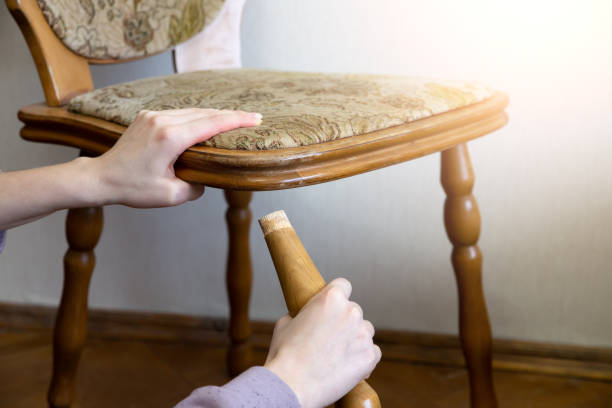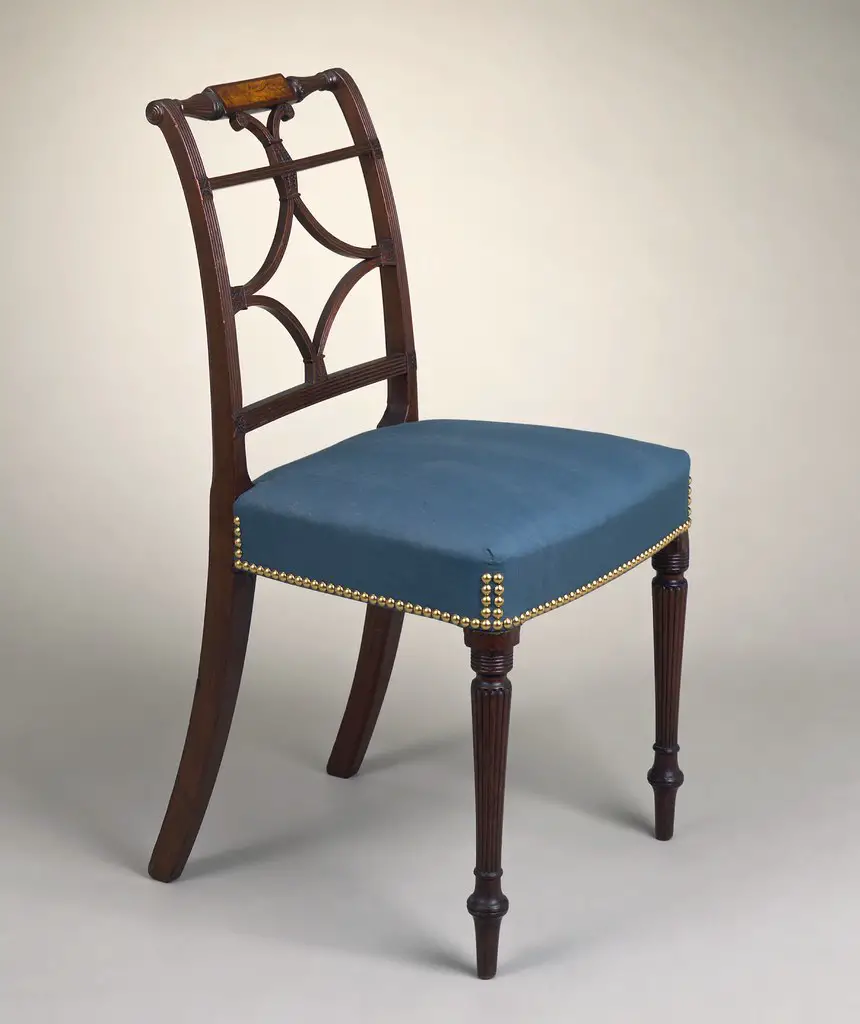Wooden chairs are one of the most common furniture items in any household. Over time, wooden chairs may lose their strength and stability, particularly in the legs or joints. Loose legs result in an unstable seat that is not only uncomfortable to sit on but can also be a safety concern.
Therefore, it becomes necessary to reglue the wooden chair legs to restore their original condition. In this blog post, we will guide you through the process of regluing wooden chair legs, step-by-step, and ensure that your chairs are good as new.
Step 1: Gather the Necessary Tools and Supplies
Before you begin regluing the wooden chair legs, gather the necessary tools and supplies. You will need wood glue, clamps, sandpaper, wood filler, and a wood chisel to remove any excess glue.
Make sure to choose high-quality wood glue that is compatible with the wood used to build the chair. Once you have the required materials, you can move on to the next step.
Best Glue for Wooden Chairs
When it comes to fixing wooden chairs, choosing the right glue is crucial. The best glue for wooden chairs should provide a strong bond that can withstand daily wear and tear. Look for a glue that dries clear and is easy to apply.
Popular options include polyurethane and epoxy glues, which provide excellent bonding strength. Be sure to follow the manufacturer’s instructions for optimal results.
Types of Glue
1. PVA glue
PVA glue is one of the most popular types of glue for wooden chairs. It is a water-based adhesive that is easy to use and dries clear. PVA glue is also very strong and can be used on a variety of different materials, including wood, plastic, and fabric.
2. Epoxy glue
Epoxy glue is another popular type of glue for wooden chairs. It is a strong, durable adhesive that can be used on a variety of different materials, including wood, metal, and glass. Epoxy glue is also waterproof and heat-resistant, making it ideal for outdoor use.
3. Superglue
Superglue is a fast-acting adhesive that can be used on a variety of different materials, including wood, plastic, metal, and glass. Superglue is also very strong and can be difficult to remove once it has dried.
4. Gorilla Glue
Gorilla Glue is a strong, versatile adhesive that can be used on a variety of different materials, including wood, plastic, metal, ceramic, and stone. Gorilla Glue is also waterproof and can withstand extreme temperatures.
5. Carpenter’s Glue
Carpenter’s glue is a water-resistant adhesive that is specifically designed for use on wood. Carpenter’s glue is available in both liquid and gel form
Step 2: Identify the Loose Joints

The first step is to identify the joints that need to be re-glued. Wiggle each leg to test and check for looseness. Look out for any visible cracks or signs of splitting wood, which will require additional repair work.
Once you have identified the joints that need attention, remove any old glue that may be present. Use a brush or a wood chisel to remove any residual glue or debris.
Step 3: Apply Wood Glue to the Joints
Apply a liberal amount of wood glue to the joint, ensuring that there is enough glue to fill any gaps or cracks. Use a brush or a small stick to spread the glue evenly around the joint. You don’t need to be too overgenerous – a thin layer of glue will suffice.
Concentrate on the area where the leg meets the seat, as this is the most vulnerable part of the chair.
Step 4: Clamp the Joint
Once the glue has been applied, you need to clamp the joint securely. Tighten the clamps around the leg to apply pressure and push the pieces together. Be careful not to overtighten the clamp, which can create dents or damage the wood.
It is essential to wait for the glue to dry completely before removing the clamps, which typically takes around 24 hours.
Step 5: Sand and Finish the Chair
After the glue has dried, remove the clamps and use sandpaper to smooth out any excess glue. Sand until the surface is smooth and uniform, and there are no rough edges. If there are any visible cracks or holes, apply a wood filler to fill them in. Once done, paint or finish the chair as per your liking.
Related Topic: How To Fix A Wooden Chair Seat? DIY
Conclusion
Regluing wooden chair legs is a simple process that can be done quickly and efficiently with the help of just a few tools and some patience. By following the above steps, you can restore your chairs and ensure they are safe and sturdy.
Before you know it, your wooden chairs will be as good as new – providing you with years of comfort and stability.
FAQs
Can you glue furniture legs on?
Gluing furniture legs on is a common DIY project that can save you from having to buy a whole new piece of furniture. The process involves using a strong adhesive to attach new legs or reattach old ones. Before you begin, make sure the surface is clean and dry to ensure the glue adheres properly.
It’s also important to choose the right adhesive for the job, depending on the type of furniture and material of the legs. As long as you follow these steps, gluing furniture legs on can be a simple and effective solution.
Can you use Gorilla glue on furniture?
If you’re in the process of repairing or DIY-ing a piece of furniture, you may be wondering if Gorilla glue is the right adhesive for the job. The good news is that Gorilla glue can certainly be used on furniture, but it’s important to keep in mind that it requires a certain level of care and precision in its application.
A little goes a long way with this powerful adhesive, and you’ll need to be patient while it cures. With the right technique, though, Gorilla glue can be an excellent choice for fixing up your furniture.
Related Topic: How To Repair A Wooden Chair Back?
Can I use liquid nails instead of wood glue?
If you’re working on a woodworking project, you may wonder if you can use liquid nails instead of traditional wood glue. While liquid nails can be used for many applications, they are not recommended for woodworking.
Wood glue is specially formulated to penetrate and bond with wood fibers, providing a strong and durable hold. Liquid nails may not bond as effectively and can also dry out quicker than wood glue, compromising the integrity of your project over time. Stick with wood glue for your woodworking needs.

2 thoughts on “How To Reglue Wooden Chair Legs? 5 Easy Steps”